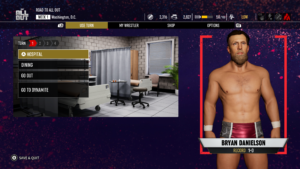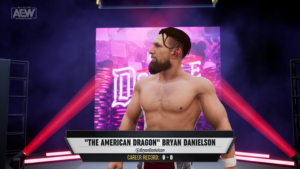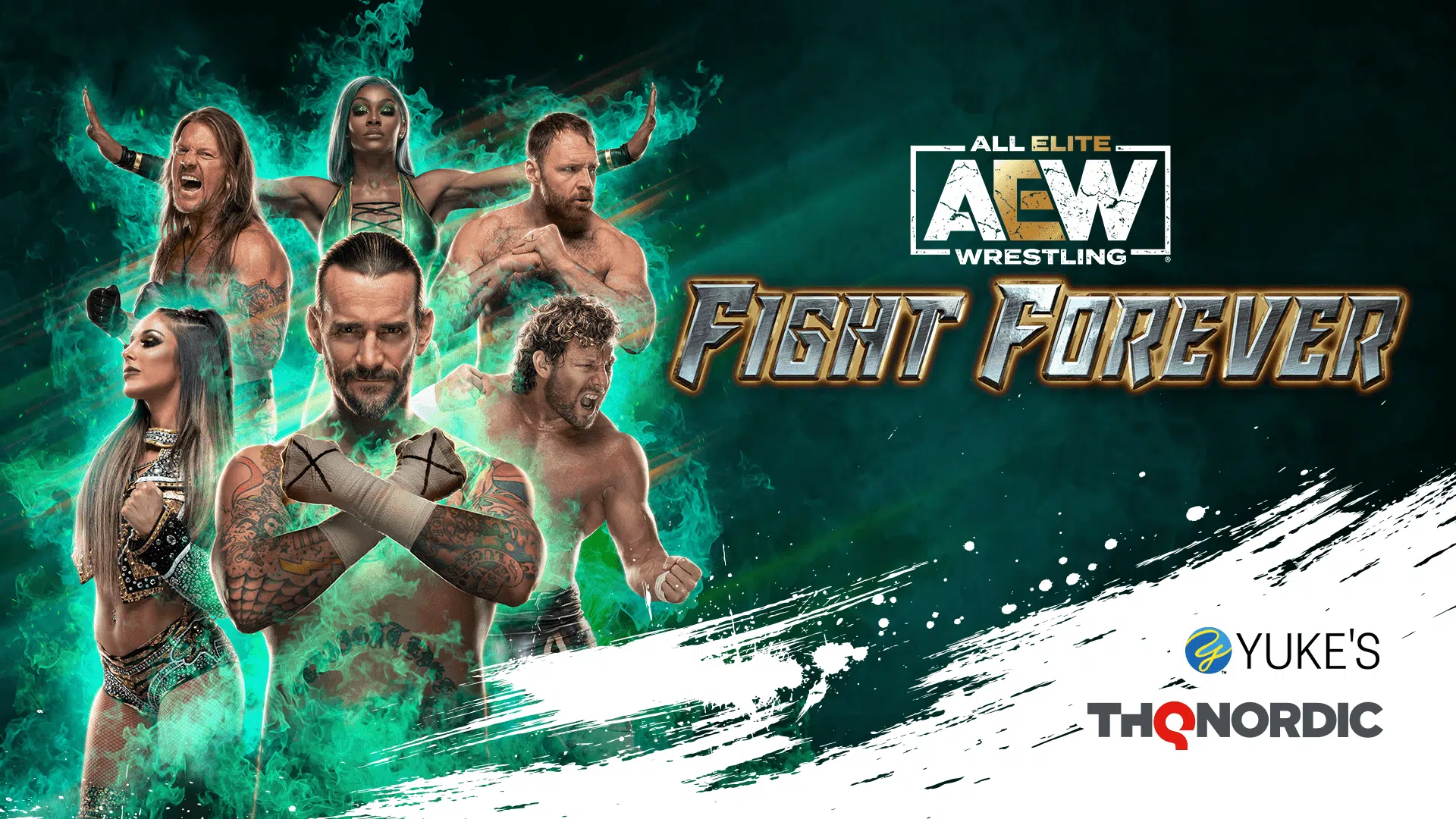Introduction
I’ve got fond memories of pretending to be a wrestler as a kid. Delivering suspect Stone Cold Stunners and taking ill-advised suplexes from my mates on the school field! Most weekends were spent crowded round an N64 playing WWF No Mercy or WCW vs. NWO: Revenge. Fight Forever aims to recapture that magic that old nerds my age have longed for. AEW is an alternative to WWE, Fight Forever offers a more arcade style of gameplay compared simulation heavy 2K games.
Gameplay
Yuke’s getting the gameplay right was important, and they did. My muscle memory of hundreds of hours spent on the N64 kicked in, being able to quickly wrestle effectively. Punches, kicks and grapples are assigned to the face buttons. Taunts and finishers are performed with a little twiddle of the joystick. Quite simply, it’s fun! Moves are impactful, satisfying and carry a lot of weight. Wrestlers puff out their chest to absorb punches made no sense to me at 15, and less at 38. The game perfectly replicates a style of game that’s 23 years old.
The limitations of a game from that period are encountered when creating an early-2000s wrestling game. My tastes have moved on, but within a couple of hours there’s a sense that everything had already been shown. Royal Rumble-lite, the Casino Battle Royal will only ever have 4 wrestlers in the ring. The exploding barbed wire match sounds exciting, but much like the damp squib of the actual match between Jon Moxley and Kenny Omega, it fails to get the heart racing. After 2 minutes the ring ‘explodes’ and then you carry on wrestling like nothing happened. Mini-games take less than a minute to play through.

Career mode
A good career mode is a staple in a wrestling game. Spending an obscene amount of hours creating myself, just about 8 inches taller and without the layer of fat around my gut is my idea of a good time. Before starting the Road to Elite career mode, I jumped into the create-a-wrestler saw that it’s only really possible to make a generic Mr. A. Wrestler and picked Bryan Danielson instead.
There’s a light RPG-management aspect to Road to Elite. You’ll jet around the States in between matches and have to balance your stats like energy, motivation and injuries. You can pick 4 activities before your next bout, all of which are just a cut-scene. You might go to the gym or call a press conference to increase your motivation, but this reduces your energy so you’ll then need to go out for dinner. It’s possible to skip these with zero impact on the gameplay, and ended up winning the AEW World Championship in 4 matches. Danielson came out in the following match with no mention that he was now the champion. Entirely forgettable.

Presentation
The look and feel of the wrestlers is excellent, with some oddities. Nick Jackson in particular looks like his head has been sculpted from playdough and then dropped face-first. In terms of presentation, you’d be forgiven for thinking it looks a little basic with wrestlers chunky caricatures resembling the more cartoonish WWE All Stars, but it just works.
In-game the mannerisms are great. Jade Cargill feels dominant, Miro stomps a foot before locking in the camel-clutch, and MJF’s weasel heel persona translates perfectly. The entrances are very short, chopped down to about 10 seconds. I’m not asking for a 30 minute Undertaker entrance each time but it’s disappointing to only get a few seconds of Fozzy’s Judas during Chris Jericho’s entrance.
Roster size
AEW overlord Tony Khan has been collecting wrestlers like Panini stickers. The current AEW roster stands at around 200 and whilst these may not all be active wrestlers, in-game there’s only 50 wrestlers to choose from. Smart (mark) money would say that some sort of tacked-on battle pass is around the corner but the list of missing wrestlers is a shameful omission. AEW Women’s Champion Toni Storm, missing. Two of the AEW Trios Champions are missing (never mind the fact you can’t actually wrestle a Trios match). Samoa Joe, missing. Keith Lee, The World’s Best Man, missing. Jamie Hayter, missing. Santana and Ortiz who partned with Chris Jericho during the debut months of AEW and are actually referenced during the creation suite, missing.
It is presumed that the roster will be built out over time but it feels just empty and again it highlights the argument that early-adopters are the ones who are punished and have to wait some months for the game to actually be worth it. It’s safe to assume that the roster will be built out over time, especially with Ring of Honor and the potential of a Forbidden Door cross over with New Japan Pro Wrestling.

Conclusion
In conclusion, AEW: Fight Forever reveals the pitfalls of nostalgia. In the desire to create a game that wouldn’t feel out of place on the N64 we’ve unfortunately got a game with the amount of content that wouldn’t feel out of place on the N64. There’s a great foundation here and the wrestling itself is fantastic, but unfortunately there’s just not enough content at the moment to keep me engaged for long.
Fight Forever? More like Fight For about 2 hours before I start googling N64 emulators.
Overall
-
CX Score - 70%70%
Summary
Pros
- Wrestling is fun and satisfying.
- Wrestlers look and feel authentic.
- Captures the essence of the N64 classic wrestling games.
- Foundation is there for an excellent game.
Cons
- Roster is far too small with some huge omissions.
- You’ll see everything the game has to offer in a couple of hours.
- Wrestler entrances only seconds long.


wow how much they pay you for this review no integrity